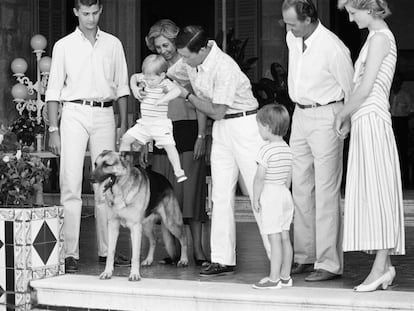Is ‘dad smell’ dead? How an entire generation was left adrift when a classic perfume disappeared
The classic Old Spice eau de cologne was discontinued after 86 years, leaving many loyalists without an essential facet of how we present ourselves to the world: our fragrance
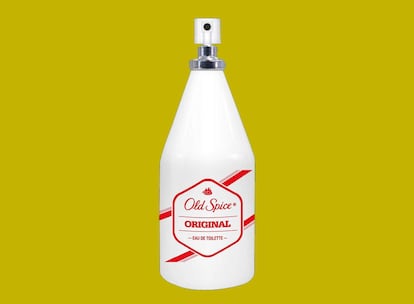
In life, you can lose so much. Money, time, shame and credibility, but one of the most unexpected, which makes it no less tragic, is scent. A few months ago, this happened to men all over the world, when the Old Spice company decided to cease commercial sales of one of its oldest products, Old Spice Eau de Toilette Original. The cologne, which appeared in its original version in 1938, had lent its signature combination of spice and wood to the scent (and by extension, personality) of several generations.
It was used by men as varied as Elvis Presley and Woody Allen, back when the world of men’s perfume was limited to a handful of products immune to the passage of time. It was one of those brands that we associate with what could be called “dad smell”: an enduring fragrance that accompanies a man throughout his life, becoming part of his personality, passed from one generation to the next, meaning that sometimes, it was also a granddad’s smell.
One of these men who was left suddenly mourning his aroma is journalist Fernando Palmero. Like others, his relationship had its roots in his childhood. “It’s the cologne my father used. When I started shaving, he used to shave with Old Spice products, and I also started using it,” he recalls. For Palmero, the importance of a perfume lies not in itself, but rather “in how it adapts to you.” “The same cologne on another body, on another person with different physical characteristics, smells different. I had found in it that point, in which I didn’t just feel comfortable with how it felt on me, but also in how it was received by others. People like how that cologne suited me.”
The death of a classic
Why stop marketing a product that still had fans all over the world? Cristina García, business leader of the personal care division of Procter and Gamble, which owns Old Spice, explains: “We removed it from the catalog a few months ago because we saw that in Spain and Europe, it was no longer very relevant. We are a brand who makes deodorants, shower products, that is what we are focusing on and what we are strong in.” Basically, it was no longer a priority. That being said, the brand is aware that the cologne still had its loyalists. “We have an aftershave that smells the same, and we know that some people use it as a cologne. They pour it into their hand and apply it to their neck.”
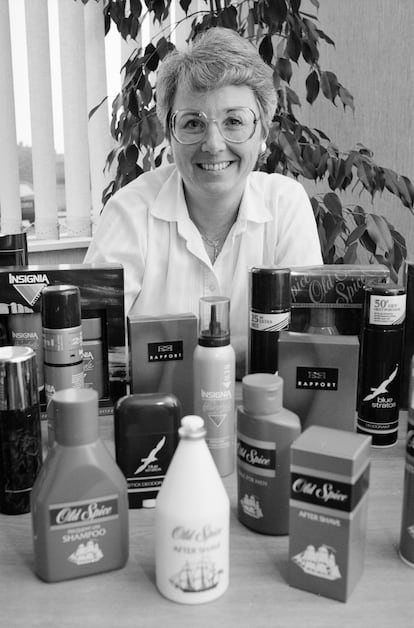
For Palmero, this convenient solution does not make up for the demise of the cologne. “I’m literally on the hunt for new scents, for new colognes that remind me of that one,” he says. “What I liked about it was that mix of wood and cinnamon. I’m finding things that remind me of cinnamon, and others of wood, but I haven’t found any that combines those two scents.” Inevitably, this loss is also influenced by changes in the tastes of the current public. “There is a younger public to whom colognes like this one smell a little bit old-fashioned, so to speak,” García says. “People are now turning to other kinds of more youthful scents, or even using deodorant as a cologne.”
The rise, fall and nostalgia for the “dad cologne”
The description of the original Old Spice cologne speaks of top notes of nutmeg, lemon and orange, heart notes (those perceived a few minutes after applying that are the most long-lasting in a perfume) of cinnamon and carnation, with cedar and vanilla in the base notes. “Wood and citruses have traditionally been the primary trends of men’s perfumery,” says Daniel Figuero, author of the Spanish language essay Contraperfume (Editorial Superflua), in which he explores both the evolution of perfumery and the way in which a scent is associated with memory and the construction of identity. “They are fragrances that are either very close to cologne, which is a classic formula that has been used since the mid-19th century, and is very fresh, with the typical clean scent related to citrus, or very woody.”
Up until recently, those were the only options that the industry offered for men. “In general, male clientele is much more loyal to a fragrance, I don’t know if that’s due to comfort, laziness or simply because once he comes to identify with a scent, it’s very difficult for him to change. That happens with these classic fragrances that we are talking about,” says Figuero. “Drawing a parallel with fashion, some men wear what they already know works. For the office, for example, they always opt for blues or browns. It’s more or less the same with fragrances. They look for one that works every day and they stick with it.”
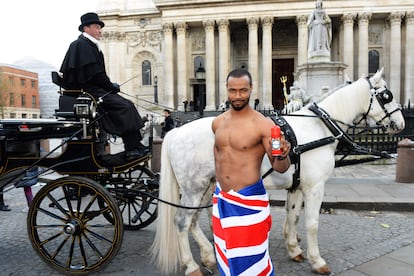
That classicism in perfume, which is associated with a masculine image, remained nearly unchanged for decades. “You have to keep in mind that, at the time, there weren’t many choices,” Priscilla Presley pointed out at an event with fans of her former husband, Elvis Presley, when someone asked about his favorite scent. Colognes like Brut and Aqua Velva were also ubiquitous in bathrooms, and were almost always associated with the ritual of shaving, the final step in that process. “Although not a particularly well-known fragrance, Fahrenheit has a very loyal clientele. Variations were launched, like Fahrenheit Cologne and Fahrenheit Parfum, but no matter what, the original Eau de Toilette was still in demand out of pure loyalty,” says Figuero.
That consistency in men’s perfume began to change between the end of the 1990s and the beginning of the aughts. “I don’t know exactly which was first, but I do remember that Opium, for example, came out with an eau de parfum version. The change in concentration of a fragrance was already one step, because the eau de parfum is usually marketed to women. Also, they started to enter into the amber family, to leave out a little bit of wood or to mix them, to introduce some floral…”
Another precursor was CK One, a teen classic from Calvin Klein. “In Spain, it continues to be a bestseller. It was the beginning of unisex minimalism, with no distinctions between men’s and women’s versions, and it inherited a bit of the idea of the classic citrus cologne, but with a touch of marine, with a different touch. Then [Giorgio Armani’s] Acqua di Gio came out, and that began to open the door to experimentation a bit more.”
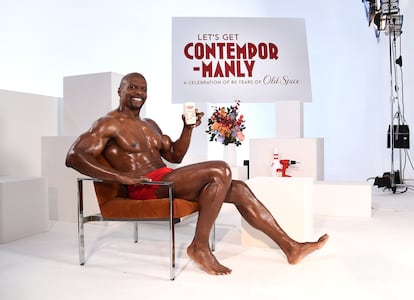
Still, these trends have not managed to put an end to classic colognes, at least not all of them. Associated with memory and the construction of a personality, scent is a bit more complicated than swapping out sneakers for heels. That’s how EL PAÍS web editor Guillermo Alonso sees it, speaking about his fascination with less-sophisticated colognes. “I love those sporty, fresh, inexpensive perfumes that are always in a tarnished, half-hidden section of drugstores,” he says. “I guess they remind you of your adolescence. If your adolescence was wonderful, they take you to a safe, better place. But if it was a torment, they often remind you of the smell of that friend who made you feel safe, or the person you had a crush on. There is an erotic charge to it, although in reality all perfume ads have that charge. That doesn’t mean you have to buy them or wear them all your life, but sometimes I go to those sections, smell those affordable colognes and just remember for a little while. Then I go back to my formal, functional adult perfume with cardamom and chili pepper and a woody base.”
“This is a personal point of view, but I think that it’s one that is very common: fragrance is another form of self-expression,” says Figuero. “It’s not that it becomes your personality, but it is an expression of personality, just like the clothes you choose, which send a message to the people around you. But also, fragrance has a very powerful emotional component, because it is closely associated with emotions and memory. In fact, the part of the brain that processes odors is practically in the same area as that which processes memory. Associating your family, your father or your grandfather with a specific fragrance is very common. Whether you dare to wear that same scent yourself is another matter.”
It stands to reason that wearing the perfume your father once wore can be comparable, Figuero continues, to “wearing a watch or jacket that we have inherited from him, which is something I’m noticing that the younger generations do a lot. Nowadays, you see a lot of young guys wearing very old jackets from the ‘80s. In a way, wearing a fragrance today that is considered traditional, I think, can be a subversive gesture. A way of saying, ‘I can wear this and give it a new vision, maybe one that is more ironic, or perhaps more modern, than it was originally.’”
Sign up for our weekly newsletter to get more English-language news coverage from EL PAÍS USA Edition
Tu suscripción se está usando en otro dispositivo
¿Quieres añadir otro usuario a tu suscripción?
Si continúas leyendo en este dispositivo, no se podrá leer en el otro.
FlechaTu suscripción se está usando en otro dispositivo y solo puedes acceder a EL PAÍS desde un dispositivo a la vez.
Si quieres compartir tu cuenta, cambia tu suscripción a la modalidad Premium, así podrás añadir otro usuario. Cada uno accederá con su propia cuenta de email, lo que os permitirá personalizar vuestra experiencia en EL PAÍS.
¿Tienes una suscripción de empresa? Accede aquí para contratar más cuentas.
En el caso de no saber quién está usando tu cuenta, te recomendamos cambiar tu contraseña aquí.
Si decides continuar compartiendo tu cuenta, este mensaje se mostrará en tu dispositivo y en el de la otra persona que está usando tu cuenta de forma indefinida, afectando a tu experiencia de lectura. Puedes consultar aquí los términos y condiciones de la suscripción digital.
More information
Últimas noticias
Most viewed
- Reinhard Genzel, Nobel laureate in physics: ‘One-minute videos will never give you the truth’
- Oona Chaplin: ‘I told James Cameron that I was living in a treehouse and starting a permaculture project with a friend’
- Pablo Escobar’s hippos: A serious environmental problem, 40 years on
- Why we lost the habit of sleeping in two segments and how that changed our sense of time
- Charles Dubouloz, mountaineering star, retires at 36 with a farewell tour inspired by Walter Bonatti
